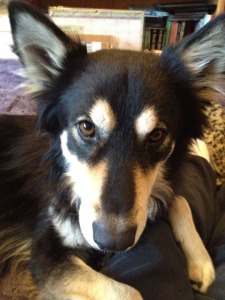 Have you ever been in a situation where you took something someone said the wrong way? What about misreading the expression on someone’s face, or their body language? Of course you have; it happens all the time. Although we intuitively understand the facial expressions and body language of others, the simple fact is, now and then we make mistakes. Fortunately, a straightforward conversation can usually clear up the confusion.
Have you ever been in a situation where you took something someone said the wrong way? What about misreading the expression on someone’s face, or their body language? Of course you have; it happens all the time. Although we intuitively understand the facial expressions and body language of others, the simple fact is, now and then we make mistakes. Fortunately, a straightforward conversation can usually clear up the confusion.
But what about reading dogs? Sure, we understand basic canine body language, and we know for the most part what a dog’s expressions and behaviors indicate. But it’s possible for everyone from the greenest dog owner to the most experienced trainer or behavior expert to make mistakes. Dogs are, after all, living creatures; it’s not like reading a temperature gauge or taking a pulse, where the answer is measurable and finite.
I remember once being at the computer when Bodhi came over, sat down, and gave me a meaningful look—you know, the one that can bore holes into your skull. Busy with my work, and assuming he was just bored and pestering me for attention, I told him repeatedly, “Not now.” Imagine how badly I felt when I finally left my office to find that his water dish was empty and probably had been for some time, especially after the bully stick I’d given him 30 minutes before had made him oh so thirsty.
Things can get dicier when we misread our dogs in situations that involve other dogs or people, especially if our dogs aren’t comfortable in those situations. Missing a subtle stress signal or a split-second flash of a mannerism can mean we don’t remove the dog from a situation quickly enough and, as a result, a more serious interaction occurs. This point was driven home recently, as I’ve been preparing a new seminar that includes half a day on dog-dog play. It’s extremely video-intensive, and the process of assessing all that video has been very educational. There is no way our eyes and brains can process all the nuances of play and communication between dogs; it just happens too fast. It really did blow my mind to see, during the slow motion playback, just how much I had missed. I bet that slow motion playback will open a lot of attendees’ eyes during the seminar as well.
Fortunately, completely misreading our own dogs doesn’t happen very often if we are tuned in to them. What I see more often is strangers misreading my dogs. “Oh, look, your dog wants to play.” No, my dog is stalking your dog, who apparently looks like lunch. Or the infamous, “All dogs love me” as the person approaches, even as you step in front of your dog to block any further interaction. It’s obvious to most that your dog does not love everybody, but some folks just seem to waft along in a cloud of blissful ignorance.
When others misread our dogs, we can step up and be our dogs’ advocates, their protectors. When we misread them…well, we can always do better the next time, and that means staying open to the possibility that our dogs’ intentions or behaviors may not always be what we perceive them to be. It means we continue our own ongoing education by being in the moment and practicing close observation of the amazing, nuanced signals and communication that is the language of dogs.



 Posted by wildewmn
Posted by wildewmn 


